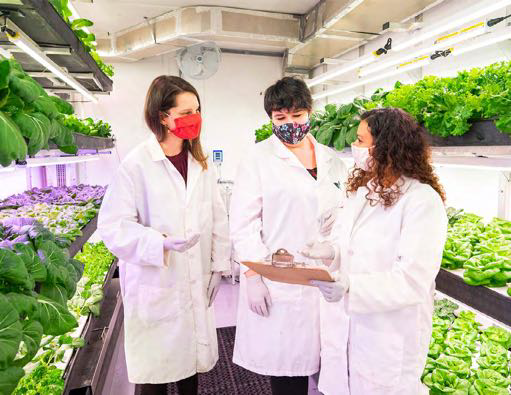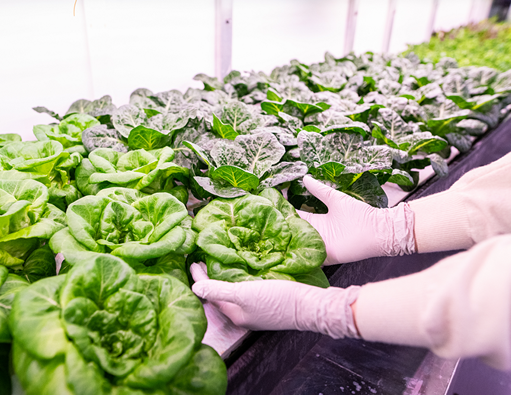Spotlight profile: Corey and Alida, Modular farm producers

Founders, Corey (left) and Alida (right): Ottawa-based entrepreneurs bringing fresh produce to communities across the country.
Northern Canada has challenging climate conditions, demanding logistics and a reliance on imported food, either by ship or aircraft. With the current rise in fuel costs, access to reliable, fresh and cost-effective produce is increasingly unaffordable. Northern communities are particularly vulnerable to food scarcity given their geographic location, along with variable weather and poor soil quality, which make growing crops year-round impossible. Access to remote communities, in some circumstances, can be limited to air access as the road infrastructure is either unreliable or unavailable. During severe, inclement weather that prevents safe flight, these communities can be left without fresh food options for extended periods of time.
As a result, available produce is in limited supply, which significantly increases the cost to the consumer. Costs for some of the most essential goods have risen over the past year. Canadians across the country are paying an average of 9.7% more for foodFootnote 1 purchased from stores when compared to April 2021. Prices for shelf-stable foods have seen the biggest increasesFootnote 2, namely bread (+12.2%), pasta (+19.6%), rice (+7.4%), and cereal products (+13.9%). However, essential products, such as fresh fruit (+10.0%), fresh vegetables (+8.2%), and meat (+10.1%) have also become significantly more expensive.
Local food advocacy has been gaining support across Canada. Two entrepreneurial university students, Corey and Alida, are firm believers in the local food movement, so they participated in an entrepreneurship incubation program at their university. While visiting a Northern community, they witnessed first-hand the challenge remote communities face in obtaining fresh produce. They developed a solution to help produce growers become more self-sufficient and sustainable. Corey, Alida, and their team designed a hydroponic plug-and-play system that can house and grow a variety of products - the most popular of which are lettuces, leafy greens, and herbs. They harnessed the power of soil-less growing, where the roots grow in nutrient-rich water and fresh produce can grow from seed in as little as six weeks. In addition, their system has made it possible to offer fresh produce to communities at a reduced rate, making healthy eating both accessible and affordable.
The ability to grow produce on-site and on-demand has allowed many geographically-remote regions with suboptimal climates the ability to overcome their unique challenges, and become self-sufficient producers and suppliers. Corey and Alida's solution has expanded beyond providing remote communities with access to fresh produce. Now, they partner with schools, non-profits and communities across the country who see the value in growing food locally. From these expansions come opportunities for education and economic empowermentFootnote 3, as those who purchased modular farms expand their operations and hire staff from the community itself to assist with growing, harvesting and distribution efforts.


Producers in discussion inside one of Corey and Alida's self-contained growing units. Rows of crops growing inside the unit.
Census data can help Corey and Alida's team to identify areas of the country that may be in need of a modular farm solution. Statistics Canada's new Census of Agriculture: Community Profiles tool can allow the team to review the statistical profile of farm and farm operators for a specific geographic location or community and identify regions where farm operations are limited. This tool can be used to find opportunities to promote modular farming as an alternative solution for those with limited access to produce. For those who purchased a modular farm solution, data from the 2021 Census can help to determine growing and pricing strategy. By accessing the GeoSearch tool and searching for their specific region, growers can learn more about family size in their areas, which can help them assess potential demand. In addition, accessing Census of Population data on income can shed light on how much their customers may be able to afford. Using this information can help to inform how growers and producers price their products once they're ready for market.
The latest insights from the 2021 Census are being released throughout 2022. Be sure to check back as new release topics become available!
- Date modified: